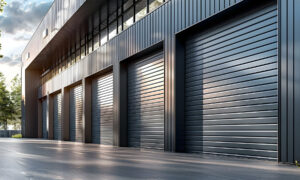If you’re responsible for fire safety at your business premises, it’s important to understand the two main approaches to fire protection – active and passive fire protection.
That’s because the right fire safety products, systems and strategies help to keep people and buildings safe. And help to put a business owner’s mind at rest too!
So what’s the difference between active and passive fire protection? Here we look at both terms and give examples of fire protection products that fit into each category.
What’s the difference between active and passive fire protection?
Passive fire protection refers to the way in which a building’s structure helps to prevent the spread of fire and smoke. You don’t need to activate or trigger passive fire protection systems.
Active fire protection only kicks in when a fire has occurred. Some active fire protection products are operated manually. Others function automatically when they detect a fire.
Another key difference between active and passive fire protection? Active fire protection tends to be much more visible.
As we’ll see when we look at some passive and active fire protection examples, you can easily spot a couple of active fire protection products in your workplace.
Passive fire protection systems are less obvious. But they’re there in the background, ready to protect your premises if the worst happens and a fire breaks out.
What is passive fire protection?
Passive fire protection aims to contain the spread of fire and smoke. This fire safety approach uses fire-resistant materials and structural elements to slow the spread until the fire service arrives.
Some passive fire protection products can contain fire for up to four hours. This gives your team plenty of time to exit the building safely. And helps to keep other parts of your premises safe from fire and smoke damage.
Passive fire protection examples
Here are a few passive fire protection examples. These fire safety products are often installed during the construction of a building. But it’s possible to install upgraded fire safety materials once a building is in use too.
Fire doors
Fire doors are a key piece of kit in passive fire safety. They’re made with fire-resistant materials that can withstand extremely hot temperatures.
When they heat up, fire doors expand to create a tight seal between door and frame. This closes any gaps through which fire or smoke could escape.
You’ll find fire doors listed with a rating, such as FD30, FD60 or FD90. These numbers tell you how many minutes a fire door can withstand fire and smoke.
The majority of fire doors made from glass or wood can provide up to 60 minutes of passive fire protection. Steel fire doors can last for up to four hours.
Fire-resistant glazing
Fire-rated glazing is another passive fire protection example. It can be used for windows, sky lights, storefronts and partitions.
Similar to fire doors, fire-rated glass contains fire and smoke. It’s made from materials that can withstand hot temperatures. And it comes in a range of different ratings that indicate its fire resistance.
Fire compartmentation
Compartmentation means sealing walls and floors, and using fire-resistant materials in walls and floors, to create fire-resistant compartments. That way, if a fire happens in one area of a building, the building structure helps to prevent its spread.
Compartmentation is a fire safety requirement for all new buildings. Take a look at all fire safety responsibilities here.
What is active fire protection?
Active fire protection aims to actively detect and suppress flames. Active fire protection products operate in two different ways. They can be
- operated manually
- triggered by heat, flames or smoke
Active fire protection examples
Some of these active fire protection examples probably already feature in your commercial premises. They provide early warning and an essential line of defence against fire and smoke.
Fire alarms
The most familiar active fire protection example is the fire alarm.
Fire and smoke alarms alert you automatically when a fire breaks out. They’re activated by smoke or heat. And for larger buildings, both wired and wireless systems are available.
Fire curtains
Fire curtains are large, flexible, fire-resistant barriers. In a fire, they deploy automatically. But for the rest of the time, fire curtains are stored out of sight, in wall or ceiling cavities.
Fire curtains can prevent the spread of fire and smoke for up to four hours. They’re particularly useful for buildings with large spaces. Imagine a large shopping centre or a big hotel lobby.
When a fire occurs, fire curtains create a temporary fire compartment. It’s a way to contain a fire without ruining the aesthetics of a commercial space.
Fire extinguishers and suppressions systems
Fire extinguishers, sprinklers and suppression systems can all be used to suppress a fire.
You operate a fire extinguisher manually. But sprinkler and suppression systems are usually programmed to come on automatically if they detect heat or smoke.
These active fire protection systems use a variety of materials to suppress a fire, including water, gas and foam.
Ventilation systems
Ventilation systems consist of vents and fans. They’re sometimes referred to as AOV. This stands for automatic opening vent.
In an automatic system, vents and fans are activated during a fire. They direct smoke out of the building and away from evacuation routes.
The importance of active and passive fire protection
To keep people and buildings safe, you should use a combination of active and passive fire protection systems as part of your fire safety strategy. Working together, these systems will help to detect, suppress and contain a fire.
This gives you the early warning you need to evacuate the building while fire protection systems try to keep the fire under control.
Here at Secure Door Systems, we can support your active and passive fire protection strategy. Take a look at our fire safety products or give our expert team a call for fire safety advice.






